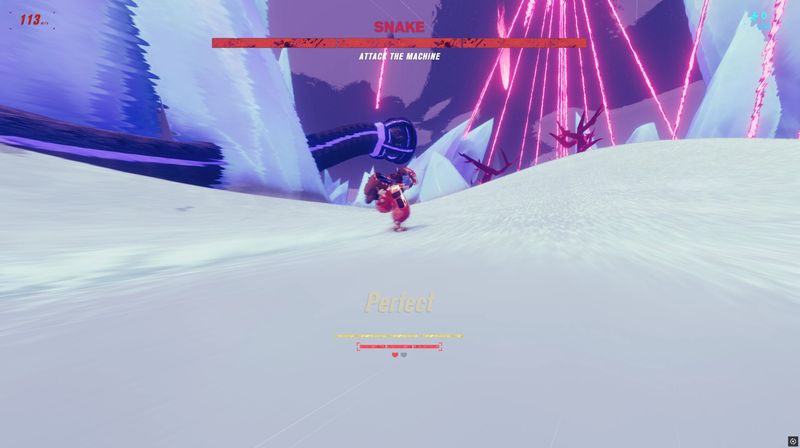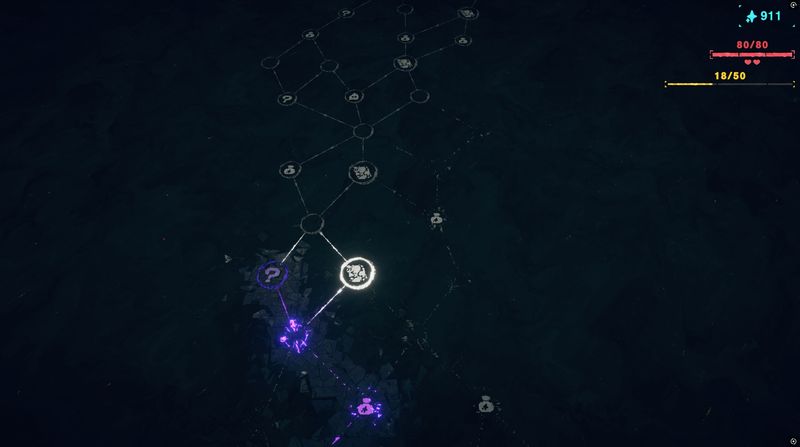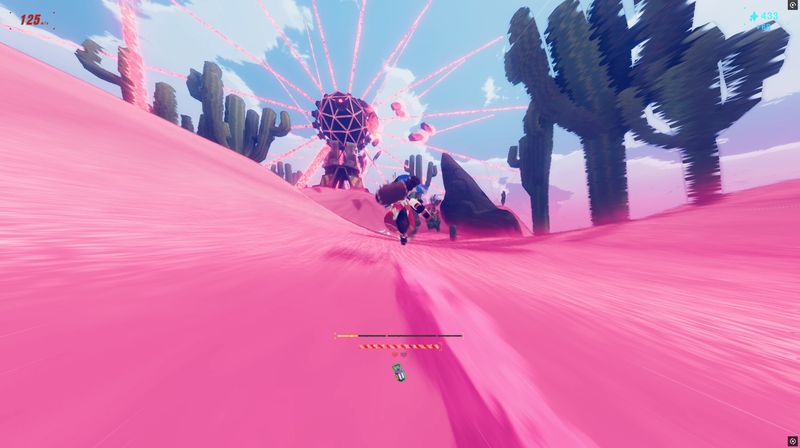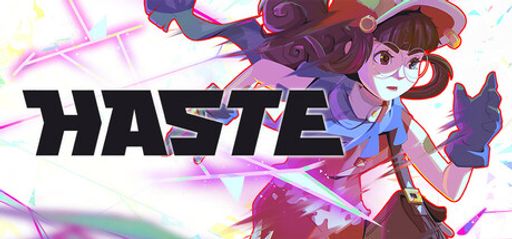I was thrilled to dive into Haste by Landfall as soon as it hit. As a speedrunner, I live for games that challenge your skills in real time. Haste promised a rush of adrenaline as you run fast, soar through the air, and master landings in ever-changing worlds. With its release on April 1, 2025, I knew I was in for an adventure that could redefine speedrunning in the roguelite genre. Still, my experience was a blend of exhilaration and frustration.
Overall Impression
All in all, Haste has a remarkable core. The movement mechanics, which form the heart of the game, stand out in a crowded field. Every leap feels fluid, and every dive into a new shard generates an exciting surge of speed. Moreover, I enjoyed the sensation of entering a flow state. When everything clicks, the game becomes a canvas for speed and precision. However, while the fundamentals impress, the game is not without its clear missteps.

Gameplay Mechanics
The gameplay in Haste is designed for those who crave a speedrunning challenge. I found the base movement mechanics to be rock solid. Jumping, diving, and chaining leaps gave me an authentic sense of velocity. I experienced moments where I skipped entire sections of obstacles at ludicrous speeds. However, I also noticed occasional issues that hampered the experience. Many levels become frustratingly unpredictable. The procedural generation system sometimes places obstacles in unyielding patterns. In a few instances, I encountered sections that felt outright unwinnable.
Several players have echoed these concerns. Some users pointed out that an overreliance on obstacle spam forces players to jump blindly into an RNG-fueled challenge. What should be a test of precise movement is reduced to a trial of luck. The imbalance in items and abilities does little to help. One notorious example is the overpowering Wraith Hourglass. It can trivialize the game’s other tools and skills. I appreciate a balance where the player’s mastery makes the difference. In Haste, however, certain elements seem too dominant. This disrupts the intended design and sometimes feels like a crutch.

I witnessed significant improvements after early patches. Landfall took immediate notice of community feedback and pushed a fix to tame some of the game-breaking bugs. Though many issues remain, it shows promise when the core mechanics shine through. The initial release felt rushed, and it appeared that QA might have been tested in an earlier state. The rushed change to a roguelite model might have contributed to these design shortcomings. It is clear that Landfall cares about quality and is actively addressing issues. This commitment is something I value as a dedicated speedrunner.
Story and Characters
The game’s narrative and world-building are minimal. Haste does not try to overwhelm with an intricate storyline. Instead, the world serves as a backdrop for pure movement and speed. The characters, if you can call them that, play a minor role. The brief snippets of dialogue and the sparse context do not distract from the gameplay. For dedicated players like myself, the absence of a strong narrative is acceptable if the gameplay is tight. Unfortunately, this minimalism can leave some players craving more depth in character dynamics and world-building.

Visuals and Graphics
Visually, Haste excels in creating an atmosphere that complements its fast pace. The art style is vibrant and dynamic. Landfall has created a world that feels alive, even when the levels shift at random. The design choices contribute to a strong sense of immersion. While the graphics are largely a high point, they sometimes clash with flaws in level design. When obstacles are arranged unfairly, even the best visuals cannot compensate. Still, the remaining visuals and art details hint at a promising future for this title.
Sound and Music
Sound and music deserve a standing ovation. The soundtrack is exceptionally crafted. Every beat and melody contributes to the sensation of rapid movement. The audio cues help me to anticipate obstacles and time my leaps perfectly. Sound effects are crisp and add a tactile layer to the experience. Overall, both sound and music enhance the fervor of Haste. As a speedrunner, the audio track is critical in keeping my adrenaline up and of my focus sharp.

Difficulty and Replayability
Difficulty in Haste ranges from thrilling to maddening. Early levels offer a gentle learning curve that rewards skill and precision. However, later shards become dramatically tougher due to balance issues and unpredictable procedural design. The final boss stands out as a particularly brutal challenge. Some players have called it a bit nuts and overly reliant on stacked bullet-hell mechanics. This forced me to repeatedly test my skills and experiment with item combinations. I believe that gameplay should celebrate player ability over overpowered shortcuts. The current reliance on items like the Wraith Hourglass detracts from the intended emphasis on pure speed and precision.
The game maintains a good replayability factor. Each run in Haste feels unique despite repeated elements. However, the potential for unwinnable levels can discourage even the hardiest speedrunner. I value games that reward repeated attempts and encourage refining my techniques. Haste achieves this through its core “run fast” mechanic, yet falls short when RNG dominates the challenge. The high replay potential stems from the unpredictable obstacle layout, even if this unpredictability sometimes borders on unfairness. I remain hopeful that upcoming patches will smooth out these rough edges.

Final Thoughts
In comparing Haste to other titles in its genre, I see both promise and promise unrealized. The fluid movement and well-tuned adrenaline are competitive with games like Exo One. Yet, the reliance on repetitive obstacles and uneven procedural generation is a significant drawback. Haste is a fascinating experiment in design that has not yet reached its full potential. I genuinely believe that a few focused changes could elevate it to classic status as a premier roguelite. The idea to replace the full procedural system with a more controlled, tileset-based randomizer is one suggestion I find compelling. This approach would ensure fairness while maintaining replayability.
Beyond the gameplay and mechanics, Haste ties you in with its raw, energetic vibe. Landfall has crafted a game that stands on the precipice of greatness. I am excited to see their future updates and the evolution of Haste. The developers have shown they listen to player feedback and are committed to balance and refinement. As a speedrunner and a passionate gamer, I appreciate their efforts in pushing the boundaries of game design. I remain optimistic that Haste will continue to improve and satisfy the community.

Conclusion
In conclusion, Haste offers a thrilling, fast-paced experience for those willing to brave its challenges. The movement mechanics are its backbone, inspiring true speedrunning moments. Several key areas need attention, including procedural generation, item balance, and difficulty spikes. These issues detract from an otherwise energetic core. With continuous support and updates from Landfall, I believe Haste can mature into a classic of the roguelite genre.
I rate Haste 3.5 out of 5 stars. The game scores high on movement and adrenaline, but falls short on consistency and balance. I encourage Landfall to refine these rough edges. For a dedicated speedrunner like myself, Haste is an exciting venture into the heart of speed and precision. I look forward to witnessing its evolution into a game that truly rewards skill over chance.


